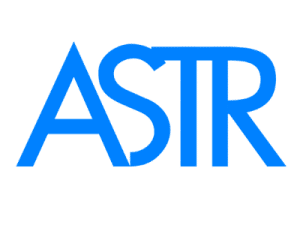Top 5 Signs You Have Internal Scar Tissue (And How to Treat It Naturally)
Top 5 Signs You Have Internal Scar Tissue (And How to Treat It Naturally)
Search terms: internal scar tissue symptoms, pelvic fibrosis signs, deep tissue adhesions
🔍 What Is Internal Scar Tissue?
Internal scar tissue—also known as fibrosis or adhesions—develops inside the body after surgery, inflammation, trauma, or repetitive stress. Unlike external scars, these deep tissue adhesions often go undetected for months or years, yet they can quietly impair organ function, restrict mobility, and cause persistent pain.
⚠️ Top 5 Signs You May Have Internal Scar Tissue
1. Ongoing Pain After Healing
If you’ve had surgery, injury, or an inflammatory condition and still feel deep, aching, pulling, or burning pain, internal scar tissue may be the culprit. This pain is often dull and radiating, not sharp or sudden.
2. Limited Range of Motion
Scar tissue can bind to muscles, fascia, and nerves—making it harder to stretch, twist, or move freely. If your mobility hasn’t returned fully after recovery, internal adhesions may be restricting your motion.
3. Sensation of Tightness or Tugging
You may feel like something is “pulling” beneath the surface—especially around surgical sites, the abdomen, pelvis, or joints. This tension worsens with movement or stretching.
4. Chronic Digestive or Pelvic Issues
In the abdomen and pelvis, internal scar tissue can compress organs and nerves, leading to:
-
Bloating or constipation
-
Pain during intercourse
-
Irregular menstruation
-
Urinary urgency or retention
-
Pelvic floor dysfunction
5. Numbness, Tingling, or Referred Pain
When scar tissue affects nearby nerves, it can cause nerve entrapment symptoms—like numbness, tingling, or shooting pains. This is common in the back, legs, arms, and abdomen.
🚫 Why Internal Scar Tissue Often Gets Overlooked
Traditional imaging (like X-rays or MRIs) may not detect soft tissue adhesions, especially if they don’t compress a structure enough to be visible. That’s why many people go undiagnosed—or are told it’s “in their head.”
✅ How to Treat Internal Scar Tissue Naturally
1. Myofascial Release Therapy
This technique gently stretches and mobilizes fascia—the connective tissue where scar tissue tends to build up. It restores elasticity and relieves pain by breaking up adhesions at the root.
2. Instrument-Assisted Soft Tissue Release (ASTR Method)
Dr. Joseph Jacobs, DPT, developed ASTR after overcoming his own chronic pain caused by internal adhesions. His patented tools help:
-
Safely break down scar tissue and fibrosis
-
Improve tissue mobility and circulation
-
Relieve nerve compression and inflammation
-
Be used effectively at home without trauma
🔗 Try the ASTR Tool Set for Internal Scar Tissue Relief
📘 Read Dr. Jacobs’ Personal Story
Dr. Jacobs shares how internal scar tissue once ruled his life—until he developed the ASTR method to heal naturally. Read his full story and step-by-step recovery plan in
Pain No More: 7 Proven Secrets to End Chronic Pain
🔬 What the Research Shows
-
Langevin et al. (2006): Fibrosis in fascia causes reduced tissue glide and long-term pain
-
Hammer et al. (2015): Deep tissue adhesions are a common but underdiagnosed source of post-surgical and chronic pain
-
Jacobs et al. (2023): ASTR therapy effectively reduces adhesions, improves range of motion, and supports long-term tissue healing
🟢 Final Takeaway
If you’re dealing with unexplained pain, tightness, or functional problems after surgery or chronic inflammation, internal scar tissue may be the hidden cause. The good news? You don’t need surgery or injections—natural release techniques like ASTR can help you heal at the source.
🔗 Break Down Internal Scar Tissue Safely at Home with the ASTR Tools

